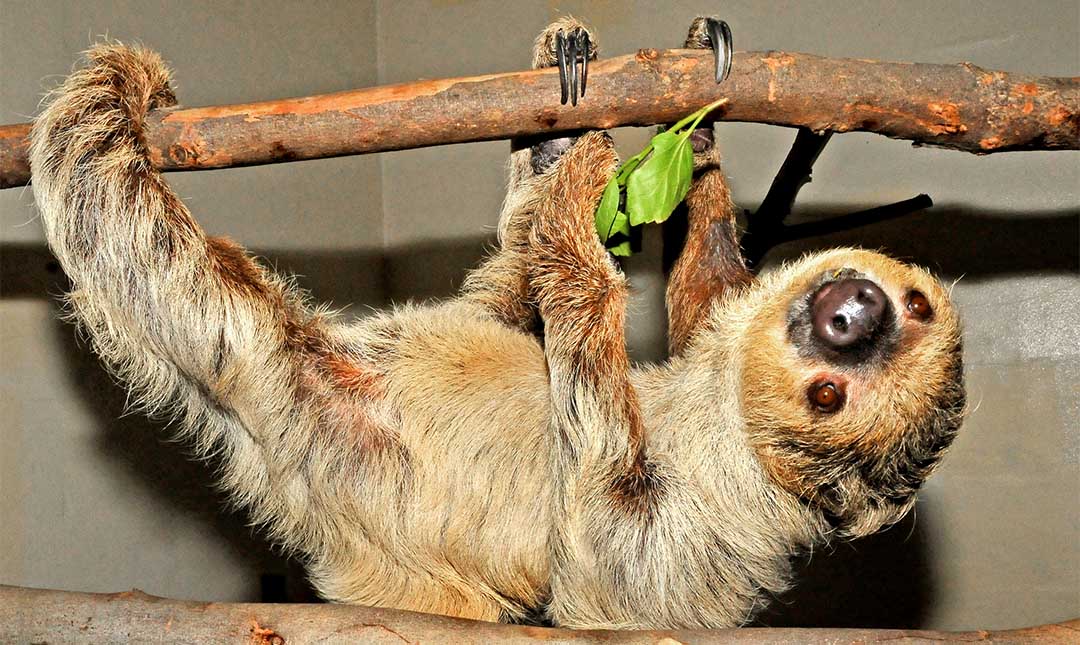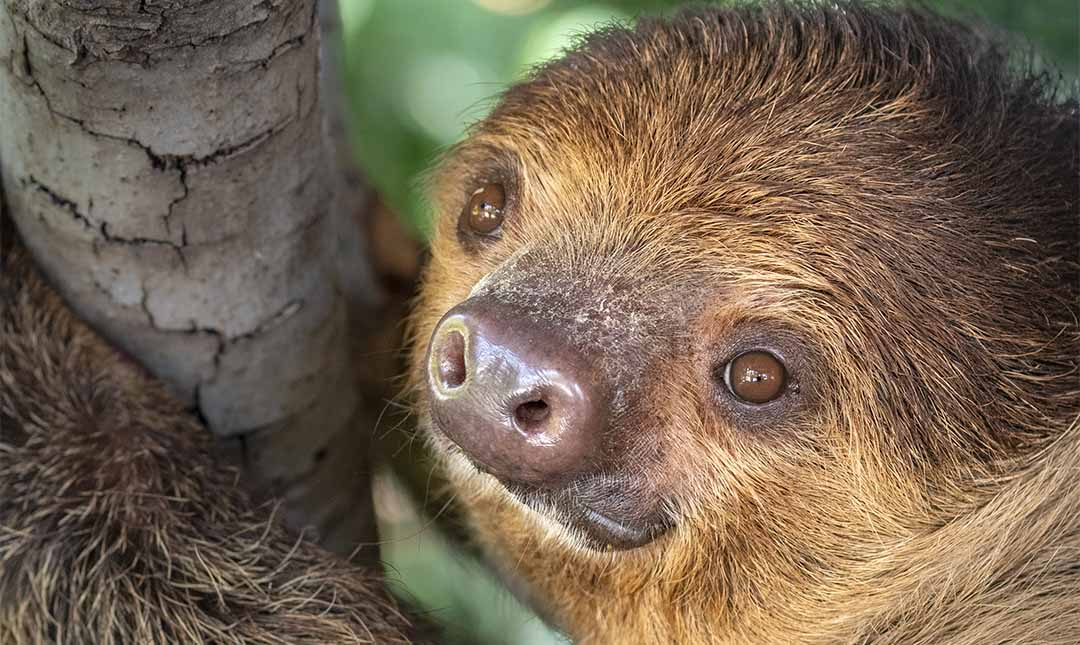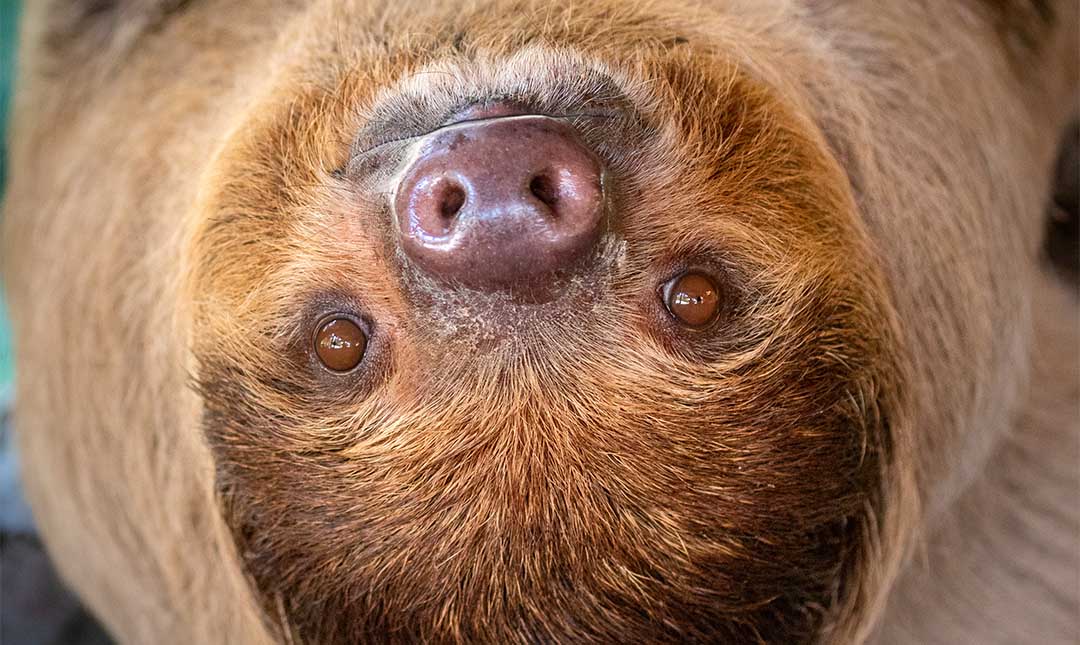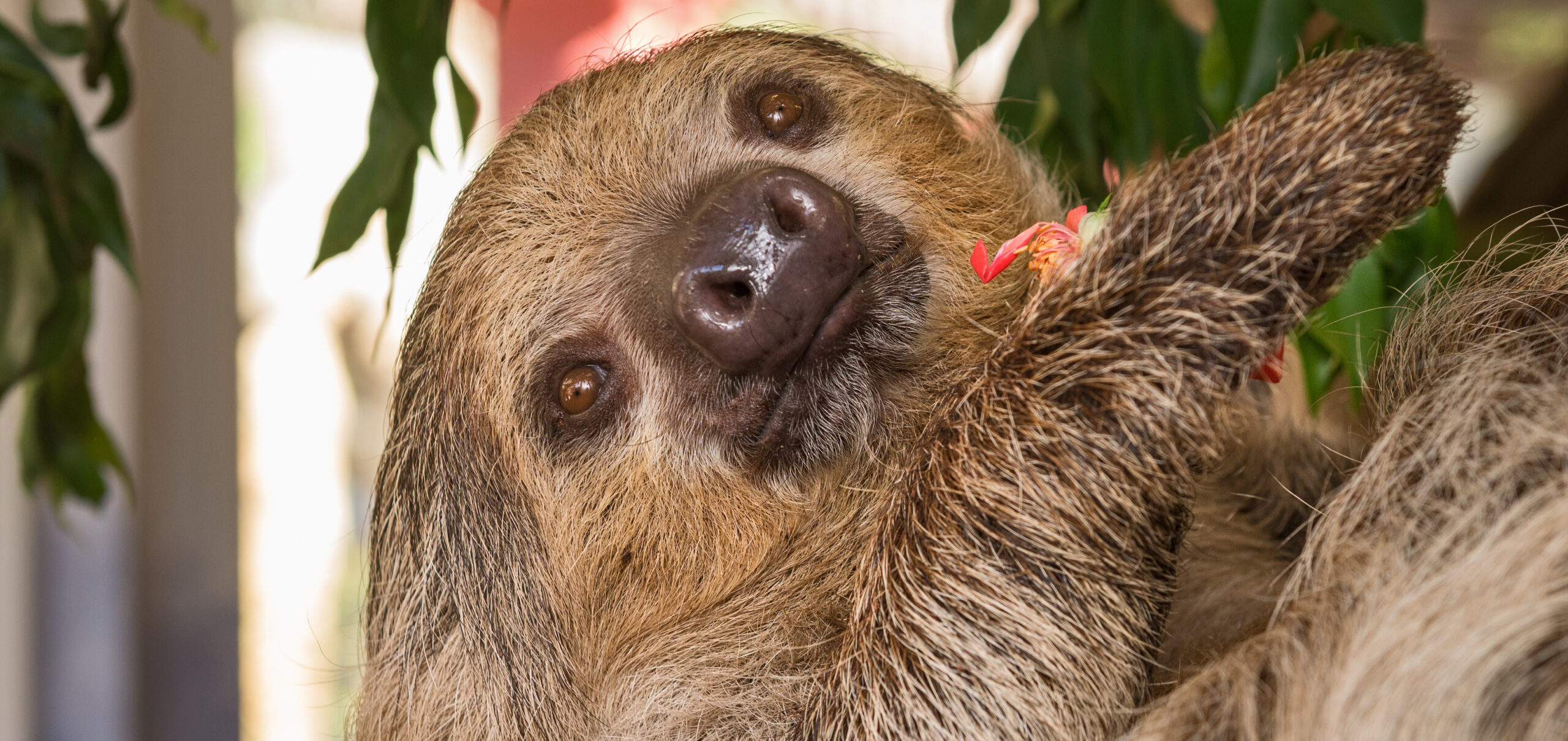About
Sloths the size of elephants once roamed the earth. One species, the megatherium, also called the giant ground sloth, lived in South America and became extinct about 8,000 years ago. Modern sloths are much smaller, reaching about two feet in length. They live in trees up to 100 feet high in the forest canopy. Special tendons in their hands and feet lock together to provide a strong grip and effortlessly support their body weight even while sleeping.
Two-toed sloths spend nearly their entire lives hanging in the forest canopy—eating, sleeping, mating, and even giving birth upside down. They move slowly through the trees, foraging for about nine hours at night and resting or sleeping for 15 hours. Algae and fungi often grow in grooves of their fur, tinting it green and providing camouflage. Sloths are excellent swimmers. Once a week they descend to urinate or defecate on the ground, losing up to 30 percent of their body weight in the process. Sloths are completely reliant on environmental conditions and regulate their body temperature by moving in and out of the sun in trees. Their core temperature can fluctuate from 74 to 92 degrees during the course of a single day! The sloth metabolic rate is very low, only 40–45 percent of the expected rate for their body mass. They eat leaves, twigs, and fruit that are abundant and easy to find but low in nutrients.



Habitat
Sloths live in the tropical forest canopies of Central and South America, where habitat loss and fragmentation are serious threats.
Diet
These herbivores eat fruit, leaves, and twigs.
Physical Characteristics
Body length is about two feet, and weight ranges from eight to 20 pounds. Lifespan averages 20 to 30 years but in human care they have lived more than 50 years.
LOCATION WITHIN THE ZOO
You’ll find this animal in the Children’s Zoo. See Zoo Map.




